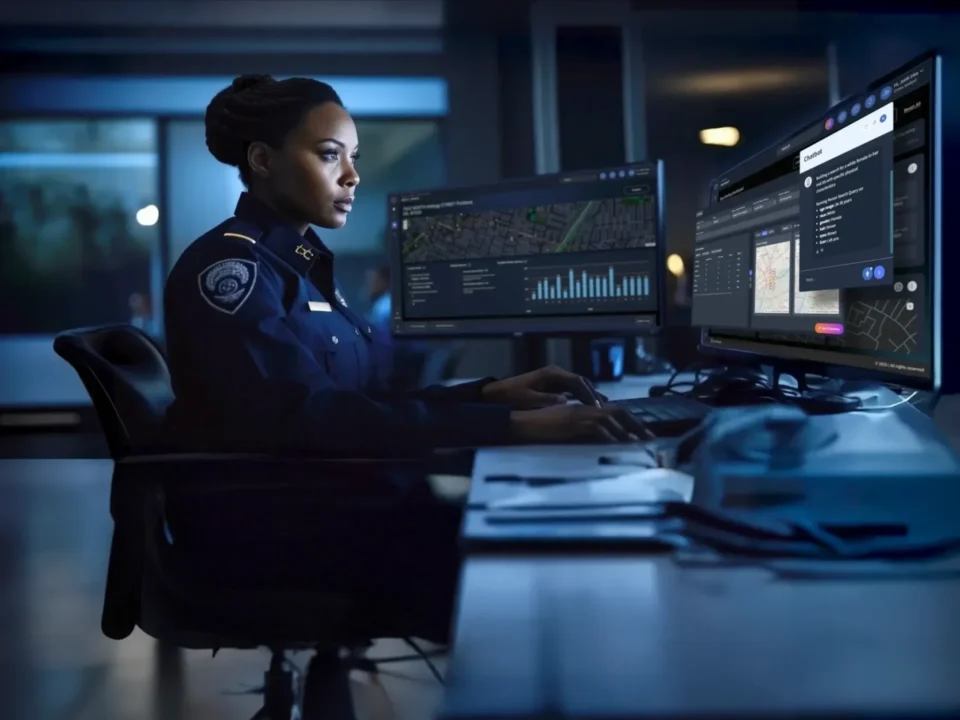Across the country, law enforcement agencies face an undeniable truth: they are being asked to do more with less. Recruitment and retention challenges, early retirements, and the growing complexity of public safety have combined to shrink the manpower available to agencies. Yet demand remains high—calls for service keep climbing, and communities still expect swift response times, accountability, and meaningful results.
As someone who has stood on both sides of this challenge—first as a law enforcement professional on the front lines, and now as a Customer Success Director in the public safety technology space—I know how steep the curve has become. Officers are under pressure not only to respond quickly but to do so with transparency, precision, and effectiveness. It’s clear: the traditional model of policing alone is no longer enough.
The Importance of Strategic Deployment
Strategic policing is not about simply adding more boots on the ground. It’s about deploying limited resources in ways that create the greatest impact. That means placing officers where they are most needed, informed by intelligence rather than guesswork.
Real-time data is the cornerstone of this approach. Pinpointing the exact location of gunfire instead of canvassing entire neighborhoods. Using vehicle and license plate recognition to track offenders and recover stolen property in minutes, not days. Planning patrol routes and staging resources before a crime occurs instead of scrambling after the fact. Automating case management so that investigators spend more time solving crimes than entering data. Leveraging integrated information platforms to accelerate investigations and connect the dots across jurisdictions.
Every one of these examples reflects a shift: moving from reactive, generalized policing toward precision-focused strategies that maximize impact and efficiency. Strategic deployment means building smarter safety nets for communities, even when staffing and budgets are stretched thin.
Embracing Innovation: Technology as a Force Multiplier
Technology will never replace the human element of policing. What it can do is amplify it. Innovation acts as a force multiplier, giving officers sharper tools, better awareness, and faster ways to serve.
Gunshot detection systems can alert officers within seconds of an incident, shaving minutes off response times when lives are at stake. License plate readers can scan thousands of plates in a single shift, identifying stolen vehicles or wanted suspects with far greater reach than manual observation ever could. Crime data platforms can sift through millions of records to surface key leads, enabling detectives to move cases forward that might otherwise stall.
These innovations don’t diminish the role of the officer—they strengthen it. They help officers show up informed, prepared, and able to act decisively. They also enhance transparency, building trust with communities who expect more clarity around how resources are used and how decisions are made.
Strategic Policing as a Community Imperative
Ultimately, strategic policing isn’t just about efficiency. It’s about legitimacy. Communities don’t measure success solely by arrests or clearance rates; they measure it by how safe they feel in their homes, schools, and neighborhoods. Strategic deployment and technology-enabled policing help agencies meet these expectations without overwhelming their personnel.
When officers are positioned where they are most needed, response times improve, crimes are deterred, and trust grows. When technology removes manual burdens, officers have more time to engage directly with residents, building the relationships that are the foundation of public safety.
Looking Ahead
The future of policing depends on the ability to adapt. Agencies that embrace data, innovation, and strategic deployment will not only stretch their resources further, they will also strengthen the bond between law enforcement and the communities they serve.





